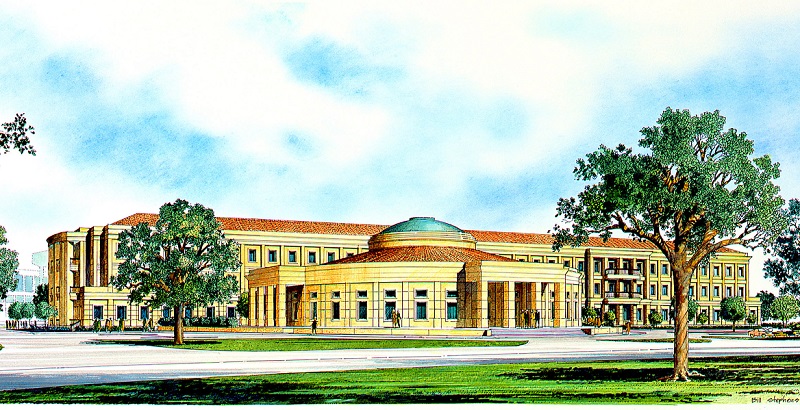
Our History
The LSU College of the Coast and Environment (CC&E), formerly called the School of the Coast and Environment (SC&E), was founded in 2001. The College replaced the Center for Coastal, Energy, and Environmental Resources (CCEER) which was established in 1991. That center represented the consolidation of the Department of Marine Science, Institute of Environmental Studies (IES), Wetland Biogeochemistry Institute (WBI), Coastal Ecology Institute (CEI), Coastal Fisheries Institute (CFI), and Coastal Studies Institute (CSI).
CC&E moved into one of LSU’s newest facilities, the Energy, Coast & Environment Building in 2003. The building features 231 offices, 81 state of the art research laboratories, a 200-seat auditorium, small and large multipurpose conference facilities, and a new interactive media center/classroom.
The College of the Coast & Environment includes the Department of Oceanography & Coastal Sciences (DOCS) and the Department of Environmental Sciences (DES). CC&E’s graduate teaching program offers master’s and doctoral degrees in Oceanography & Coastal Sciences and in Environmental Sciences. Minors in Oceanography & Coastal Sciences, Wetland Science Management, Environmental Toxicology, Environmental Sciences, and Coastal Meteorology are offered to graduate students.
In 2008, the college started offering an undergraduate degree in Coastal Environmental Science. The undergraduate degree offers five areas of concentration to better address the career objectives of students: Applied Coastal Environmental Science, Environmental Science and Research, Coastal Meteorology, Environmental Law, and Environmental Health. Members of the college’s interdisciplinary and award-winning faculty teach more than 50 undergraduate and graduate classes.
Breve historia de la Facultad de Costa y Ambiente de LSU
La Facultad de Costa y Ambiente, College of the Coast and Environment (CC&E), que hasta hace poco se llamaba School of the Coast and Environment (SC&E), fue fundada en el año 2001. La facultad reemplazó al Centro de Costa, Energía y Recursos Ambientales (CCEER), el cual fue establecido en 1991. La facultad representa la consolidación del Departamento de Ciencias Marinas, el Instituto de Estudios Ambientales (IES), el Instituto de Biogeoquímica de Humedales (WBI), el Instituto de Ecología Costera (CEI), el Instituto de Pesca Costera (CFI) y el Instituto de Estudios Costeros (CSI).
El CC&E se mudó a uno de los edificios más nuevos de LSU, el Edificio de Energía, Costa y Ambiente en el año 2003. El edificio alberga 231 oficinas, 81 laboratorios de investigación, un auditorio para 200 asistentes, aulas de conferencias y un nuevo centro de enseñanza de multimedia interactiva.
El CC&E está integrado por el Departamento de Oceanografía y Ciencias Costeras y el Departamento de Ciencias Ambientales. El programa de enseñanza del CC&E ofrece títulos en estudios de post-grado de Maestría y Doctorado en Oceanografía y Ciencias Costeras al igual que en Ciencias Ambientales. Segundas especialidades (minors) en Ciencias Ambientales, Oceanografía y Ciencias Costeras, al igual que en Ciencias y Gestión de Humedales, son ofrecidas a todos los estudiantes de post-grado.
En el año 2008, la facultad comenzó a ofrecer la licenciatura (B.S.) en Ciencia Costera Ambiental (CES). Esta licenciatura ofrece dos áreas de especialización para así enfocarse en las necesidades y objetivos profesionales de los estudiantes. Estas áreas son: Ciencia Costera Ambiental Aplicada y Ciencia e Investigación Ambiental. Reconocidos miembros de nuestra facultad, de carácter interdisciplinaria, enseñan más de 50 cursos de licenciatura y post-grado.